
Japanese curry belongs to the group of typically Japanese foods that have origins in European cuisine, called yohshoku. Curry is tremendously popular in Japan - it's on the menu at just about every 'family' restaurant and department store restaurants, and there are curry-only restaurants as well as ones that specialize in high class yohshoku in general.
Japanese curry, called curry rice (or kareh raisu) since it's always served with rice, is not much like the curries from India, Thai or other places with better known curries around the world. The best way to describe it is probably to say it's like a English style stew with curry. (It's not at all like the curries you get in modern Britain, which are firmly in the Indian or Pakistani curry families.)
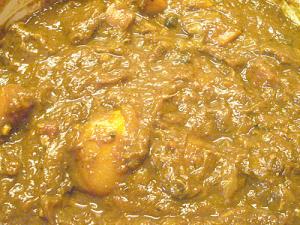 If you've ever been to a Japanese grocery store, you've probably seen the blocks or bags of curry base taking up an inordinate amount of shelf space. Competition amongst curry base makers in Japan is fierce. The bases are pretty convenient to use, but these days I use them less and less, since I discovered that making curry properly from scratch is not that much more effort than making curry with a readymade curry base. Commercial curry bases contain things like sugar or corn syrup as ingredients, plus some of them use mystery fats (always check the ingredient lists). I add sweetness just via the vegetables, especially a huge mound of slowly sautéed onions.
If you've ever been to a Japanese grocery store, you've probably seen the blocks or bags of curry base taking up an inordinate amount of shelf space. Competition amongst curry base makers in Japan is fierce. The bases are pretty convenient to use, but these days I use them less and less, since I discovered that making curry properly from scratch is not that much more effort than making curry with a readymade curry base. Commercial curry bases contain things like sugar or corn syrup as ingredients, plus some of them use mystery fats (always check the ingredient lists). I add sweetness just via the vegetables, especially a huge mound of slowly sautéed onions.
Either way, to get the most flavorful curry takes a long time. This is definitely a slow-cook meal.
This recipe for beef curry can be adapted to other kinds of meat, or to vegetarian options too. I've included instructions for using a store bought curry base as well as making your own curry roux base.
Filed under:
japanese rice yohshoku favorites beef slowcook curry
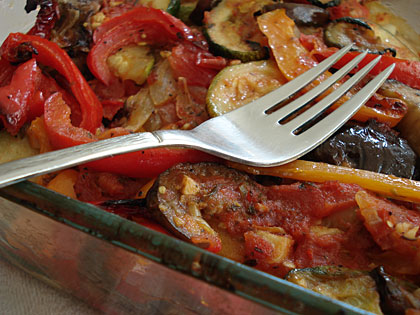
Although ratatouille seems synonymous with summer, perhaps because it comes from sunny Provence, I think it's really a dish to make right now, in early fall. This is when the essential ingredients - eggplants (aubergines), fresh tomatoes, zucchini (courgettes), sweet onions, and peppers - are all at their peak. You can get all of those things year-round nowadays of course, but vegetables in season are always just a bit sweeter.
Filed under:
weekend project french favorites vegan
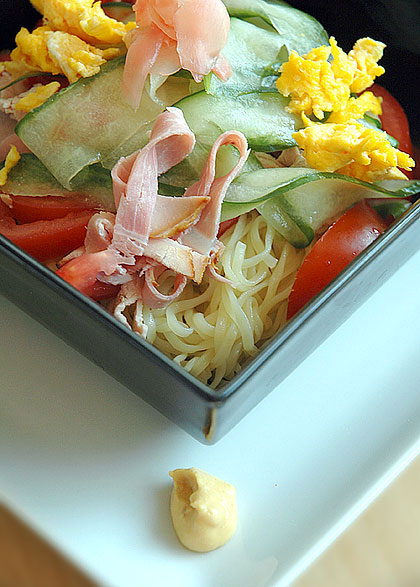
Summer in most parts of Japan is hot and very humid, so cold foods are very popular. There are a lot of cold noodle dishes, such as chilled soba noodles and thin wheat noodes (hiyamugi or so-men). I love them all, but I think my favorite is hiyashi chuuka, which is Chinese-style cold noodles as interpreted by the Japanese.
Filed under:
japanese summer noodles favorites chuuka
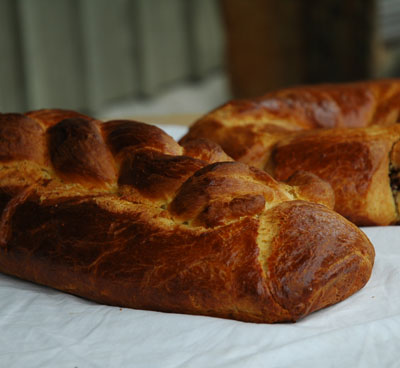
Brioche bread is so delicate, light and buttery that is just one tiny step removed from being a pastry. Plain brioche bread is delicious on its own, toasted or with loads of jam. But brioche dough also makes an ideal casing for all kinds of fillings both savory and sweet. It's my favorite dough for making anything en croute, as well as for sweet filled breads that are so nice for a brunch party.
Filed under:
bread chocolate dessert party food baking favorites
March is Women's History Month, and today, March 8th, has been declared as International Women's Day. The theme of Women's History Month this year is Women: Builders of Communities and Dreams.
Filed under:
essays chefs writers favorites
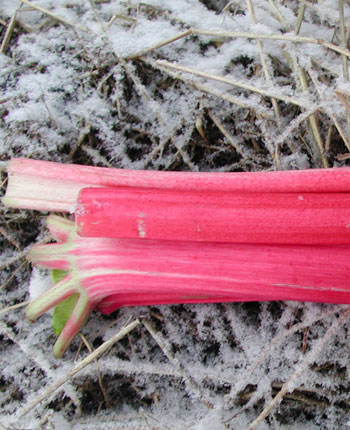
Here in the central part of Europe we have had a ton of snow over the past few days. In our corner of Switzerland we had about half a meter (about 19 inches) of the fluffy white stuff descend on us over the weekend.
In spite of that, there is a definite sign that spring is almost here: rhubarb is back in the stores!
Filed under:
dessert fruit rhubarb spring favorites
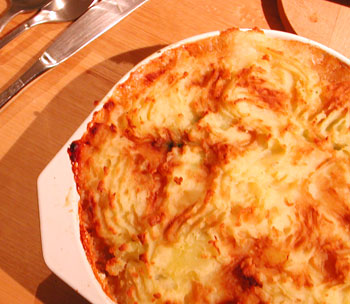
Having spent some of my growing-up years in England, I have a special place in my heart for shepherd's pie, otherwise known as cottage pie. It's definitely winter food though, because nothing is as warming as piping hot shepherd's pie straight out of the oven.
Filed under:
dinner potatoes winter pie favorites beef ground meat